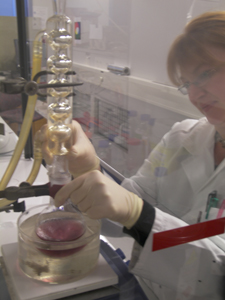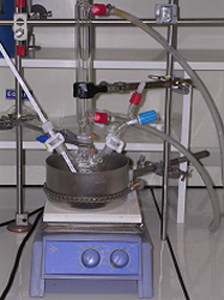
Colloidal synthesis.

Transfer after cooling.
Colloidal synthesis consists in causing one or more chemical species to react, with a view to obtaining a material whose composition and dimension are controlled in colloidal suspension within the elaboration medium. The operating conditions and the composition of the reaction medium enable, in particular, the size (< 100 nm) and geometry (spheres, rods, etc.) of the particles formed to be controlled. Post-synthesis treatments may be required, notably in order to improve the purity of the colloidal solution formed: rinsing/centrifugation or nanofiltration for example, to separate the nanoparticles from the reaction medium that has not reacted.


